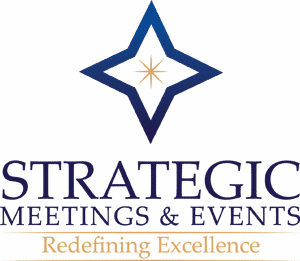Mic Runners: How To Train Them, Why You Need Them
By Christy Lamagna, CMP, CMM, CTSM
Perfection tends to be elusive, but my philosophy is that each event should get as close to that target as possible. My team and I do that by approaching every detail as if it’s the only one we’re managing. That means no task is too small for our full attention including mic runners.
We think through as many steps associated with the task as possible. Mic running or wrangling (when a speaker opens the floor to questions and someone runs to the person with the question with a microphone) is a commonly overlooked part of ballroom management.
 Effective content delivery is often the reason executives host the meeting. Some planners get caught in the details outside the ballroom, but it’s what happens inside that brought everyone together. This means focusing on the speakers, the people asking questions and the mic runners.
Effective content delivery is often the reason executives host the meeting. Some planners get caught in the details outside the ballroom, but it’s what happens inside that brought everyone together. This means focusing on the speakers, the people asking questions and the mic runners.
Mic Runners
Why this is important
The person posing the question is speaking with his/her back to the group. Anyone sitting behind this person can’t hear what’s being said. The presenter, in a classic case of forgetting about the audience, answers the question without repeating it, forcing the audience to fill in the blanks. Not only is the audience unlikely to have heard the question, it’s also not listening to the first part of the answer as it tries to fill in the blanks.
Have a plan
Without a directive, wranglers either all run to the same person or all assume someone else is headed that way. Confusion results and usually, delays. Solve this by dividing the room into sections so each wrangler has a defined territory to patrol.
Make sure the runners are strategically seated. Reserve an aisle seat in the center of the audience. This positioning has runners centrally located and with easy aisle access when questions are invited or if someone asks one spontaneously.
During the Q&A session, position runners at the front of the aisle with their backs to the stage. They may worry that people are looking at them, but the audience is likely focusing on the speaker, not the runners. By putting wranglers at the top of the aisles, audience members remember to wait for the mic before speaking and everyone knows whose question is next.
Have the wranglers check in with your production team to learn mic basics. Traditionally, the audio engineer turns the microphone on when someone is about to speak, so mics are only live when being used. This should alleviate worries that come handling a live microphone.
Handle with care
Microphones should be returned to the audio engineer at breaks, lunches and day’s end. Runners should hand the mic directly to the engineer, not leave them on the audio table. The equipment is expensive and somewhat delicate, so proper care should be taken when handling and returning them.
Make sure each runner is assigned a number when they take their microphones at the start of their day/shift. The audio team usually places tape with a number on it on the microphone’s base. Each runner should take the same microphone throughout the day. This allows the audio engineers to turn on the correct microphone when someone speaks. Otherwise, they can’t be sure which mic is being used, and cues can be missed.
Want more ballroom management tips? Email me at: Christy.Lamagna@strategic.events
Tags: Mic Runners How To Train Them Why You Need Them, Mic Runners, Event Planning, Event Planners, Strategic Planners, Strategic Events, Plan Your Meetings





